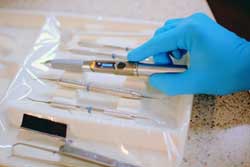Dental Organization for Conscious Sedation (DOCS) Education has launched a new regulatory website to help health professionals navigate the patchwork of state rules governing oral sedation. The site is designed to provide dentists with an easy-to-understand overview of their state dental board's requirements for oral sedation dentistry, according to the organization.
The majority of U.S. states now require some combination of formal training and standard-of-care equipment plus a permit issued by the state dental board before dentists can provide oral sedation to their patients, DOCS noted.
For instance, regulated states may require up to 75 hours of training for minimal and moderate oral sedation, and some may also require certification in advanced cardiac life support or pediatric advanced life support. Every state requires a dentist to be certified in basic life support -- CPR for healthcare providers -- as a requirement for licensure. Every regulated state also requires a modicum of standard-of-care monitoring and emergency equipment.
Many of the regulated states have linked their requirements to the recommendations of the ADA's anesthesia and sedation guidelines, which are revised from time to time. The most recent version of the ADA guidelines, released in October 2007 recommend special training for minimal and moderate sedation, ranging from 16 hours (minimal sedation) to 24 hours (moderate oral sedation) to 60 hours (intravenous moderate sedation) of didactic (classroom) instruction. The guidelines also recommend that dentists observe or document a certain number of clinical patient experiences or cases depending on the administration route used to achieve sedation.



















